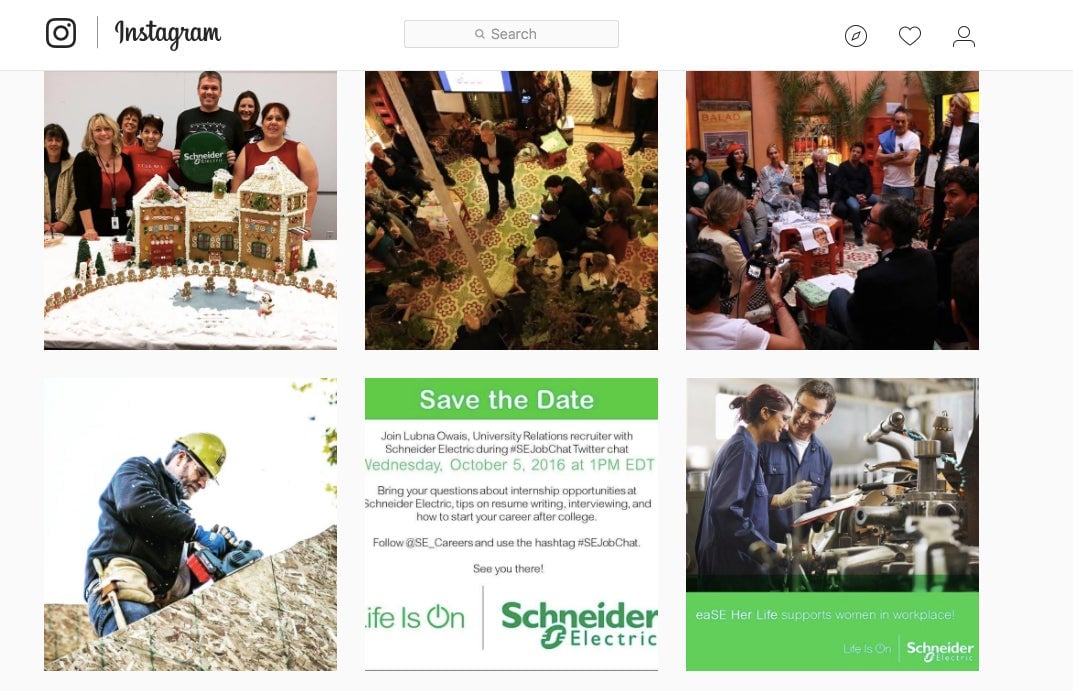Instagram is now a potent job hiring tool
If you poke around Instagram long enough, you might stumble onto the account of Schneider Electric, a massive but little-known French electronic components manufacturer.


If you poke around Instagram long enough, you might stumble onto the account of Schneider Electric, a massive but little-known French electronic components manufacturer.
Schneider, like hundreds of other decidedly unglamorous corporations, are on Instagram not to sell its gadgets to customers, but to sell itself to prospective employees.
In the superheated world of technology recruiting, having a presence on Instagram has become essential for companies looking to attract workers, who are eager for clues about potential employers’ offices, workers, and culture. At the same time, employers are using social media to examine a candidate’s, to determine whether they’ll fit in. “Instagram is the new LinkedIn,” Rachel Bitte, who heads human resources at Jobvite, a provider of hiring technology that works with 2,000 companies including Schneider, tells Quartz.
Other huge companies with low profiles courting millennials with a gauzy, sun-drenched presence on Instagram include BASF, the German chemical giant; McKesson, the $190 billion pharmaceutical wholesaler; and Bechtel, a multinational engineering firm. Their photos show employees engaged in volunteering projects, doing yoga in exotic locations, and otherwise having a great time.
Recruiting and hiring are corporate functions increasingly played out over mobile devices. Companies are eager to connect with candidates through the technology those potential employees are most comfortable with, and are using apps and other tools to process applications and assess talent. Employers like Jaguar Land Rover (paywall) ask job candidates to solve puzzles on their phones assess candidate’s problem solving abilities, and while Unilever (paywall) asks applicants to play games and submit a statement recorded on video, all of which is scrutinized by artificial intelligence.
Jobvite’s clients can use a mobile app so hiring managers can give their feedback about candidates immediately following an interview, to cut down the time it takes to make a decision. The goal is to be able to make an offer the same day as an interview, ideally before the candidate has left the building, Bitte said.
The downside of making applying for a job so effortless is applicants know less about the companies they’re applying to, and if they’re applying for a remote position, they be hired and begin working with little idea about its expectations and culture. Companies should make the recruiting process reflect the work experience, Bitte says.
The minimalist approach to hiring also means candidates have less invested in the process or company, even after they accepted an offer. Until they actually show up for work, there’s very little to keep them from applying elsewhere.
Indeed, Jobvite is also a 200-person company with its own hiring needs and uses a Facebook campaign to attract prospective employees. Candidates can then click through to job application optimized for mobile, and upload a resume from LinkedIn, completing an applications in minutes. What about the hours spent laboring over a cover letter? “Cover letters are dead,” Bitte says.